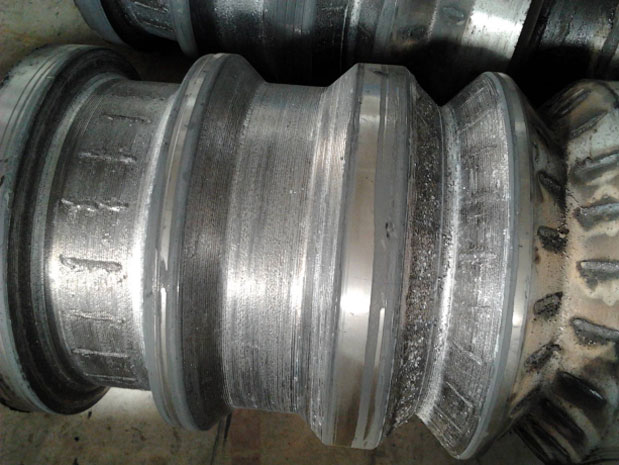0HANS GS LASER

 中文
中文 English
English France
France العربية
العربية русский
русский español
español português
português srpski језик
srpski језик Việt Nam
Việt Nam
Language

Language
 中文
中文 English
English France
France العربية
العربية русский
русский español
español português
português srpski језик
srpski језик Việt Nam
Việt Nam
Address:No.72,Optical valley Avenue, East Lake High-Tech Development Zone,Wuhan.P.C:430223
Tel:+86-27-8792 4929
Fax:+86-27-8792 4929
Whats app:+86-18717170727
Skype:sales_hansgs@outlook.com
Email:hansgs@hansgslaser.com
2018-04-17
Due to long-term operation in harsh environments, machinery and equipment can easily lead to corrosion and wear of components. Typical failure-prone components include impellers, journals of large rotors, discs, bushings, bushings, etc. Many of these components are expensive, involving many types of components, complex shapes, and varying operating conditions. Large rotors, rotor blades, and stationary blades of large-scale thermal power generating units are required to be reinforced or repaired.
Large rotor and roulette
Laser cladding technology is used to repair, without the need to preheat the workpiece, you can restore the size of the journal, and follow-up processing is small, no metallurgical cracks, hardness can reach HRC60 or more.
Laser cladding and repair process of shaft parts

(1) Pretreatment process: including degreasing and derusting of the surface of the workpiece, blast cleaning (further cleaning), and pre-cladding (cleaning of the area requiring laser cladding, and leveling the area where obvious defects exist);
(2) Quality inspection process: Magnetic particle inspection, X-ray inspection, fluorescent inspection or display agent inspection is used to inspect the cleaned surface to determine if there is any obvious defect area.
(3) Laser cladding: Laser cladding with alloy powder with independent intellectual property rights does not require preheating and no metallurgical cracks. The highest hardness can reach HRC63.
(4) Subsequent processing: Including polishing and finishing of the laser cladding area; spraying anti-abrasion coating if necessary.
(5) Quality inspection and acceptance: The inspection method is the same as that of step 2, and after the laser cladding treatment, the surface of the component is confirmed to be free of various defects, and acceptance can be performed. After the above process, the shaft parts can be renewed as new.
Laser hardening / cladding of large gears
The laser hardened gear and the ring gear have a small heat injection, and the thermal deformation of the gear or the ring gear is small, which does not reduce the accuracy of the gear and does not destroy the surface roughness of the tooth surface. Laser cladding technology can directly repair broken teeth and other conditions.
Laser quenching and repairing process of large gears

(1) Process flow: Large gears are clamped on a laser processing machine to clean the gear surface oil stains and rust spots; In the laser machining tooth surface and the journal part is sprayed with a light absorbing paint, and then the laser processing program is applied to the tooth surface. (tooth tops, roots, etc.) are quenched.
(2) Quenching process parameters: The hardness range of the tooth surface after laser quenching can be controlled between HRC35-45; the hardened layer depth is 0.4-0.6mm; the laser power is 2.0-3.5kw; the quenching scanning speed is 10-50mm/s . According to the different hardness requirements of gear tooth surface, tooth root and tooth tip on the material surface, the numerical control system is used to change the process parameters in sections to obtain the corresponding laser hardened layer. After the laser quenching without tempering, the surface roughness of the tooth surface is basically unchanged.